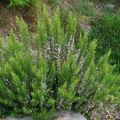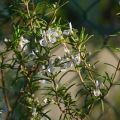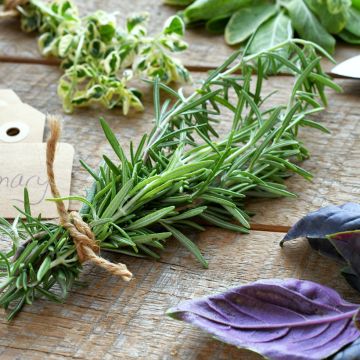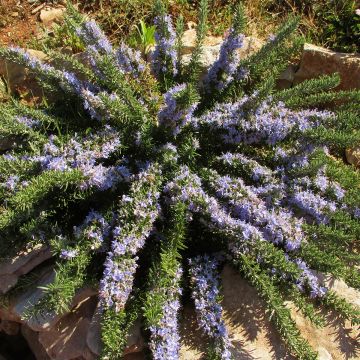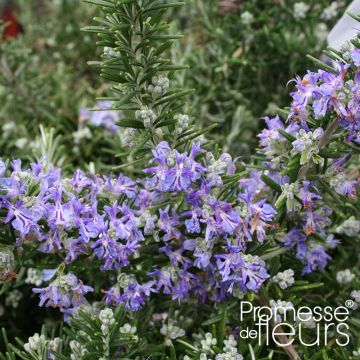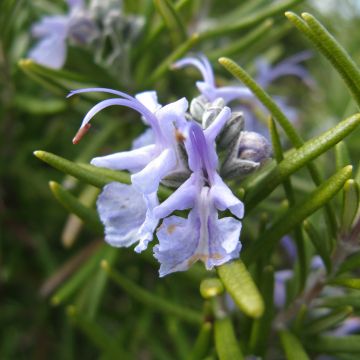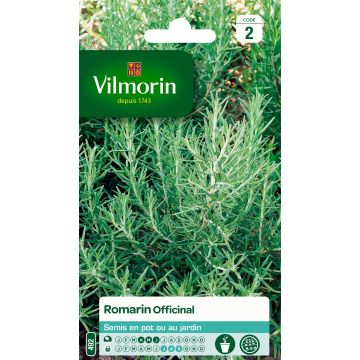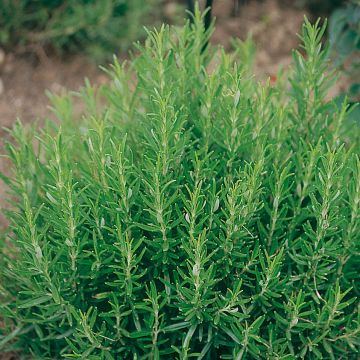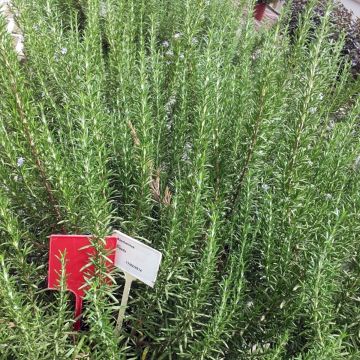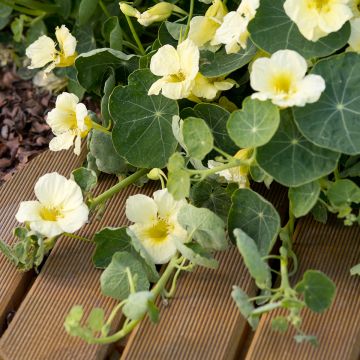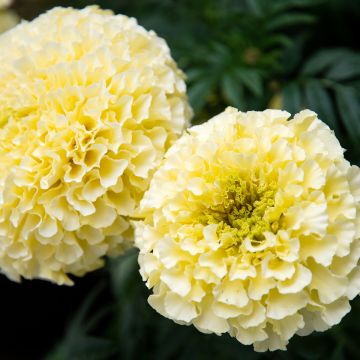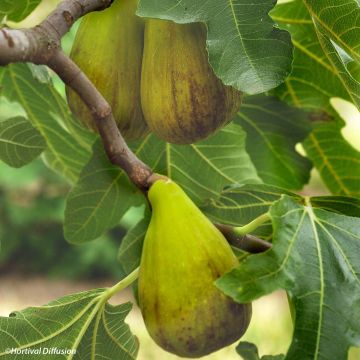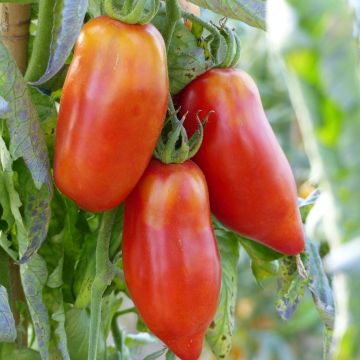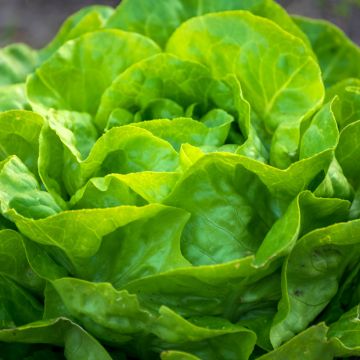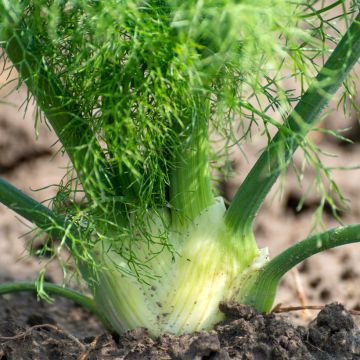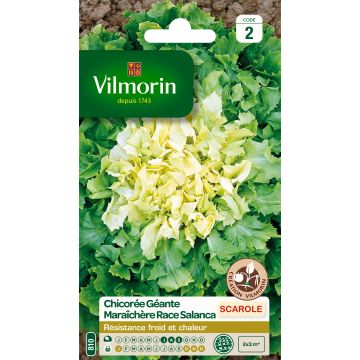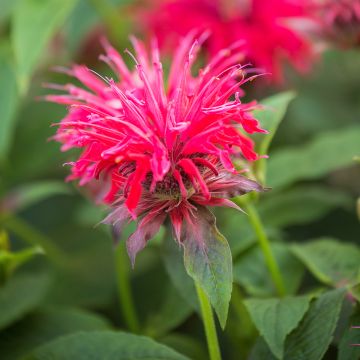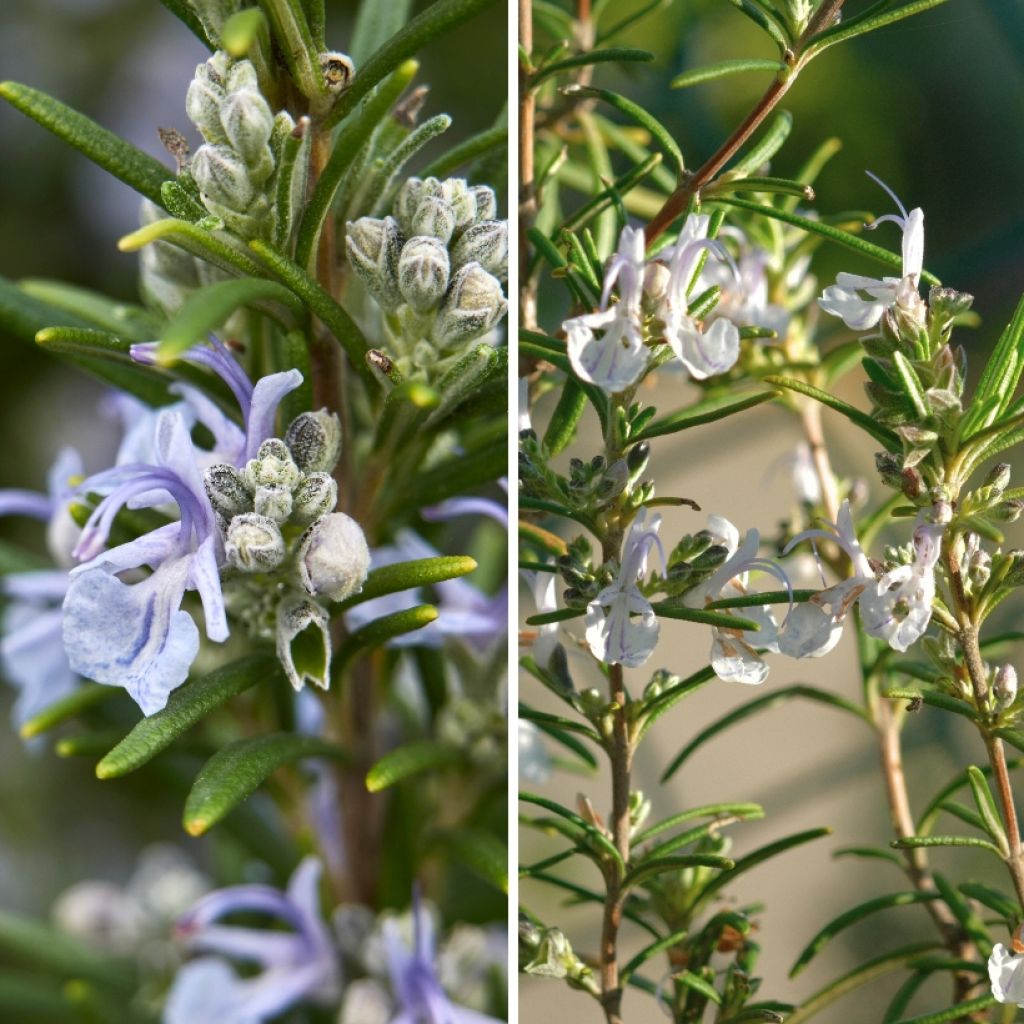

Blue and White Rosemary Duo
Blue and White Rosemary Duo
Rosmarinus officinalis sp., Albiflorus
This item cannot be shipped to the selected country
Delivery charge from €5.90
More information
Schedule delivery date,
and select date in basket
This plant carries a 6 months recovery warranty
More information
We guarantee the quality of our plants for a full growing cycle, and will replace at our expense any plant that fails to recover under normal climatic and planting conditions.
From €5.90 for pickup delivery and €6.90 for home delivery
Express home delivery from €8.90.
Collection items (2 plants)
Description
The Blue and White Rosemary Duo consists of two different varieties of rosemary (Rosmarinus officinalis) that will enliven your garden or terrace with their aromatic evergreen foliage and small honey-producing flowers. These shrubby perennial plants, known for their hardiness and drought resistance, bloom in spring and summer, or in spring and autumn in Mediterranean climates. They require well-drained soil and full sun exposure. You can use their foliage to flavour your grilled dishes and all Mediterranean cuisine.
The duo consists of:
1 Rosmarinus officinalis: common rosemary reaching 1.50 m in height with a bushy habit. Its small flowers are blue, and its very fragrant dark green foliage is ideal for cooking.
1 Rosmarinus officinalis 'Albiflorus': a rare variety of rosemary with pure white flowers. It maintains a compact habit of about 1 m in height.
The rosemarys in this duo should be planted in spring in cool climates or in early autumn in dry and warm climates. Plant them in well-drained, stony soil, preferably in a rock garden or raised bed to spare the roots from stagnant moisture which is harmful to them. In a border, at the front, or even in a pot, place the Rosmarinus officinalis, taller, in the background, and its 'Albiflorus' form at the front. Space the young plants 50 cm to 70 cm apart, aiming for about 3 plants per m², to allow good air circulation and prevent diseases.
Harvest rosemary leaves in spring or summer, when the plants are in full growth and their foliage is the most aromatic. Take the young shoots by cutting just above a leaf cluster to encourage new branching. Used fresh or dried, rosemary sprigs add an intense and fragrant flavour to a variety of dishes: roasts, marinades, soups, and even desserts. Rosmarinus officinalis, with its resinous and woody notes, is perfect for grilled meats, while its 'Albiflorus' form, being milder, pairs well with fish and vegetables.
Store the dried sprigs in a dry, dark place to preserve their aroma throughout the year.
To create a harmonious bed, combine the Blue and White Rosemary Duo with lavenders, planted at the front for a smooth transition between different heights. Add a few feet of sage Salvia nemorosa 'Caradonna' with intense purple spikes, mixed with the rosemary to enrich the colour palette. In the background, the tall spikes of Perovskia atriplicifolia 'Blue Steel' (Russian sage) with its silver-blue will harmonise perfectly with the rosemary. Plan for 5 lavender plants, 4 Perovskia, and 3 sage for a balanced composition.
Report an error about the product description
Harvest
Plant habit
Foliage
Other Rosemary
Planting and care
You can plant your rosemary in the garden or in pots.
Rosemary is a plant suited to poor and dry soil, even stony and calcareous, perfectly drained in winter. The better the drainage of the soil, the better the plant withstands winter. The richer the soil, the faster the rosemary grows, but the more it ages poorly and becomes bare at the base. It will appreciate a very sunny and somewhat sheltered location: hardy, it tolerates -12 to -14° C at its peak, but may suffer during a harsh winter, in a humid climate. It is essential to avoid watering it during the summer, as it is sensitive to Phytophthora, a fungus that attacks the collar of the plant under warm and humid conditions. You can lightly prune after flowering to shape your rosemary and maintain a compact and branching habit. Be careful, this bush does not tolerate severe pruning: never prune below the lowest leaves of the shoot.
Use terracotta pots of at least 30 cm in diameter, with drainage holes to avoid excess moisture, as rosemary requires well-drained soil. Fill the pots with a light potting mix, mixed with sand or gravel to improve drainage. Place the pots in full sun, as rosemary needs at least 6 hours of direct light per day to thrive. Water regularly, but without overwatering, allowing the soil to dry out between waterings. To encourage dense and well-branched growth, lightly prune the young plants in spring.
Cultivation
Care
Intended location
This item has not been reviewed yet - be the first to leave a review about it.
Themed vegetable gardens
Haven't found what you were looking for?
Hardiness is the lowest winter temperature a plant can endure without suffering serious damage or even dying. However, hardiness is affected by location (a sheltered area, such as a patio), protection (winter cover) and soil type (hardiness is improved by well-drained soil).

Photo Sharing Terms & Conditions
In order to encourage gardeners to interact and share their experiences, Promesse de fleurs offers various media enabling content to be uploaded onto its Site - in particular via the ‘Photo sharing’ module.
The User agrees to refrain from:
- Posting any content that is illegal, prejudicial, insulting, racist, inciteful to hatred, revisionist, contrary to public decency, that infringes on privacy or on the privacy rights of third parties, in particular the publicity rights of persons and goods, intellectual property rights, or the right to privacy.
- Submitting content on behalf of a third party;
- Impersonate the identity of a third party and/or publish any personal information about a third party;
In general, the User undertakes to refrain from any unethical behaviour.
All Content (in particular text, comments, files, images, photos, videos, creative works, etc.), which may be subject to property or intellectual property rights, image or other private rights, shall remain the property of the User, subject to the limited rights granted by the terms of the licence granted by Promesse de fleurs as stated below. Users are at liberty to publish or not to publish such Content on the Site, notably via the ‘Photo Sharing’ facility, and accept that this Content shall be made public and freely accessible, notably on the Internet.
Users further acknowledge, undertake to have ,and guarantee that they hold all necessary rights and permissions to publish such material on the Site, in particular with regard to the legislation in force pertaining to any privacy, property, intellectual property, image, or contractual rights, or rights of any other nature. By publishing such Content on the Site, Users acknowledge accepting full liability as publishers of the Content within the meaning of the law, and grant Promesse de fleurs, free of charge, an inclusive, worldwide licence for the said Content for the entire duration of its publication, including all reproduction, representation, up/downloading, displaying, performing, transmission, and storage rights.
Users also grant permission for their name to be linked to the Content and accept that this link may not always be made available.
By engaging in posting material, Users consent to their Content becoming automatically accessible on the Internet, in particular on other sites and/or blogs and/or web pages of the Promesse de fleurs site, including in particular social pages and the Promesse de fleurs catalogue.
Users may secure the removal of entrusted content free of charge by issuing a simple request via our contact form.
The flowering period indicated on our website applies to countries and regions located in USDA zone 8 (France, the United Kingdom, Ireland, the Netherlands, etc.)
It will vary according to where you live:
- In zones 9 to 10 (Italy, Spain, Greece, etc.), flowering will occur about 2 to 4 weeks earlier.
- In zones 6 to 7 (Germany, Poland, Slovenia, and lower mountainous regions), flowering will be delayed by 2 to 3 weeks.
- In zone 5 (Central Europe, Scandinavia), blooming will be delayed by 3 to 5 weeks.
In temperate climates, pruning of spring-flowering shrubs (forsythia, spireas, etc.) should be done just after flowering.
Pruning of summer-flowering shrubs (Indian Lilac, Perovskia, etc.) can be done in winter or spring.
In cold regions as well as with frost-sensitive plants, avoid pruning too early when severe frosts may still occur.
The planting period indicated on our website applies to countries and regions located in USDA zone 8 (France, United Kingdom, Ireland, Netherlands).
It will vary according to where you live:
- In Mediterranean zones (Marseille, Madrid, Milan, etc.), autumn and winter are the best planting periods.
- In continental zones (Strasbourg, Munich, Vienna, etc.), delay planting by 2 to 3 weeks in spring and bring it forward by 2 to 4 weeks in autumn.
- In mountainous regions (the Alps, Pyrenees, Carpathians, etc.), it is best to plant in late spring (May-June) or late summer (August-September).
The harvesting period indicated on our website applies to countries and regions in USDA zone 8 (France, England, Ireland, the Netherlands).
In colder areas (Scandinavia, Poland, Austria...) fruit and vegetable harvests are likely to be delayed by 3-4 weeks.
In warmer areas (Italy, Spain, Greece, etc.), harvesting will probably take place earlier, depending on weather conditions.
The sowing periods indicated on our website apply to countries and regions within USDA Zone 8 (France, UK, Ireland, Netherlands).
In colder areas (Scandinavia, Poland, Austria...), delay any outdoor sowing by 3-4 weeks, or sow under glass.
In warmer climes (Italy, Spain, Greece, etc.), bring outdoor sowing forward by a few weeks.

































